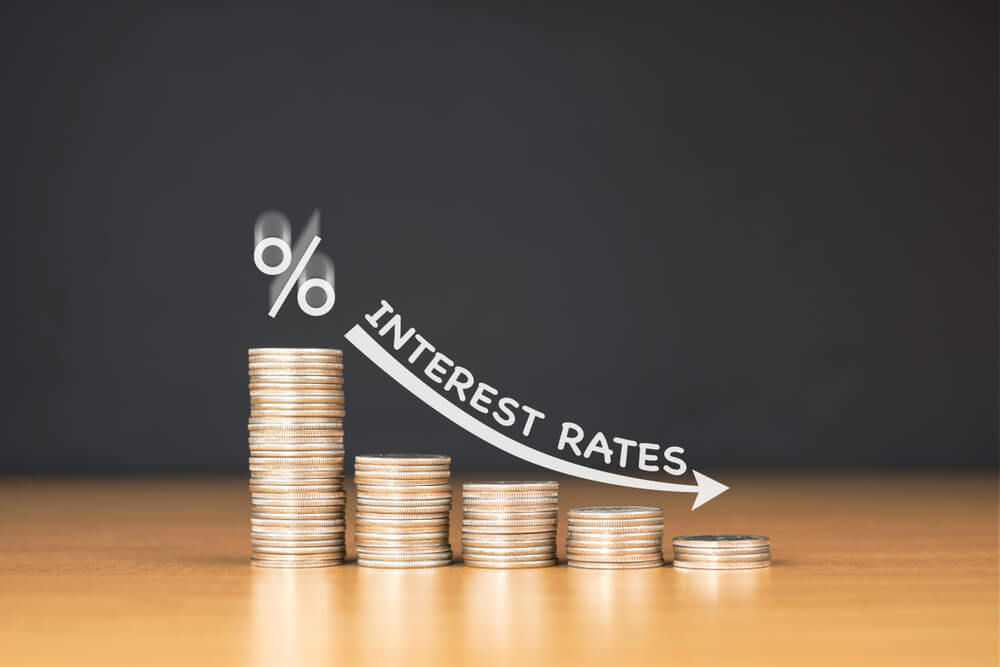The Federal Reserve has cut its benchmark interest rate again, big news for the U.S. economy but something that will likely have a muted impact on Americans’ personal finances, experts say.
That’s because the reduction doesn’t offset the increases of recent years. And as the key rate creeps closer to zero, financial institutions are less eager to pass borrowing benefits along. Lower rates could also further dampen the perks of savings.
As a reminder, the Fed slashed its benchmark rate — which affects a host of consumer and business loans — to near zero during the recession and kept it there until 2015. Then, as the economy improved, it raised rates several times. Now it has lowered them twice in one year, despite a fairly healthy economy, due to concerns about slowing economic growth and global trade tensions.
The central bank on Wednesday reduced its key rate by a quarter-point to a range of 1.75% to 2% and said it’s prepared to do what it deems necessary to sustain the U.S. economic expansion.
Here’s how the latest move may play out for consumers:
MORTGAGES AND INTEREST RATES
This is a bright spot for consumers. Mortgage rates remain at near historic lows and, while they do not move in lockstep with the Fed, they are influenced by some of the same factors. As of last week, the average rate on a 30-year fixed-rate mortgage was 3.56%. A year ago, it stood at 4.6%, according to mortgage buyer Freddie Mac.
Greg McBride, chief financial analyst at Bankrate.com, said that this full percentage point difference is “the single biggest impact on consumers” in this low rate environment. Low interest rates on mortgages can open the door for homeowners to refinance and save money or for people shopping for a house to secure an attractive rate. Someone with a $200,000 mortgage could potentially save $125 to $150 a month with a reduction of that size, McBride estimates, which is a meaningful increase in a household budget.
Mortgage rates fell sharply over the summer as broader economic concerns caused interest rates on government bonds to tumble. The yields on government bonds, especially the 10-year Treasury note, influence long-term mortgage rates. And while mortgage rates may move up slightly as they have in recent weeks, they remain historically low and no one expects major hikes soon.
BORROWING AND INTEREST RATES
The rate for other forms of borrowing — credit cards, home equity loans or personal loans — won’t see much of a change.
“The Fed raised interest rates nine times between 2015 and 2018,” McBride said. “Unwinding a couple of those puts us back to where we were this time last year, and rates are still notably higher than they had been as recently as a couple years ago.”
Lenders are also less likely to pass along decreases to consumers than increases.
Credit cards, for example, track the bank prime rate, which is 3% above the federal funds target rate. The prime rate will move down immediately after the Fed’s decision but many credit card issuers do not automatically adjust rates downwards because they have leeway in their contracts to do so. Some issuers may elect to keep rates unchanged to account for default risk or increase profits, said Tendayi Kapfidze, chief economist at LendingTree.
The average interest rate on a credit card is 17.61% as of Wednesday, according to Creditcards.com. A year ago it was 16.92%.
Other types of short-term borrowing, such as adjustable rate mortgages and home equity lines of credit, are more directly impacted by changes by the Fed. But Kapfidze said that as rates approach zero, they’ve been less responsive and he expects the latest reduction will see a muted reaction as well.
SAVINGS AND INTEREST RATES
Interest rates on savings accounts were already historically quite low and will likely stay that way.
The FDIC reports that the average rate paid on savings accounts in the U.S. is 0.09%. While some lenders have been competing online to offer high yield savings accounts with rates well above 2%, a few banks have already opted to dial back those offers. Marcus, the retail bank arm of Goldman Sachs, and Ally Bank both lowered the rates on their savings accounts this spring, just ahead of the Fed’s prior rate cut in July. There are still some savings accounts well above the national average available but those rates will likely dip after this most recent announcement.
All the same, this shouldn’t discourage people from saving, McBride said.
Consumers who find themselves worried about an economic downturn should still take steps now to shore up their finances, regardless of rates. That includes paying down debt, refinancing at lower rates and boosting emergency savings.
This “will enable households to better weather an economic downturn whenever one should materialize,” he said.
© The Associated Press. All rights reserved.




